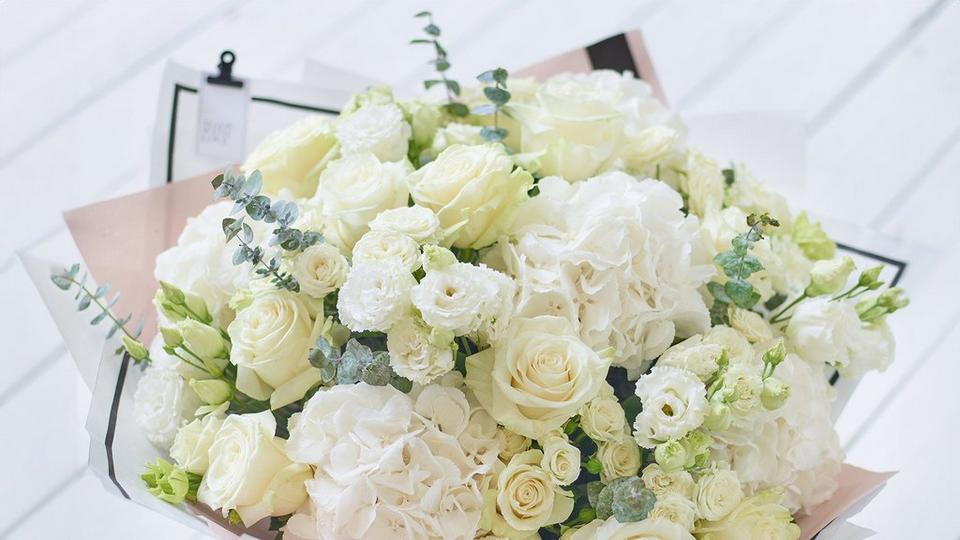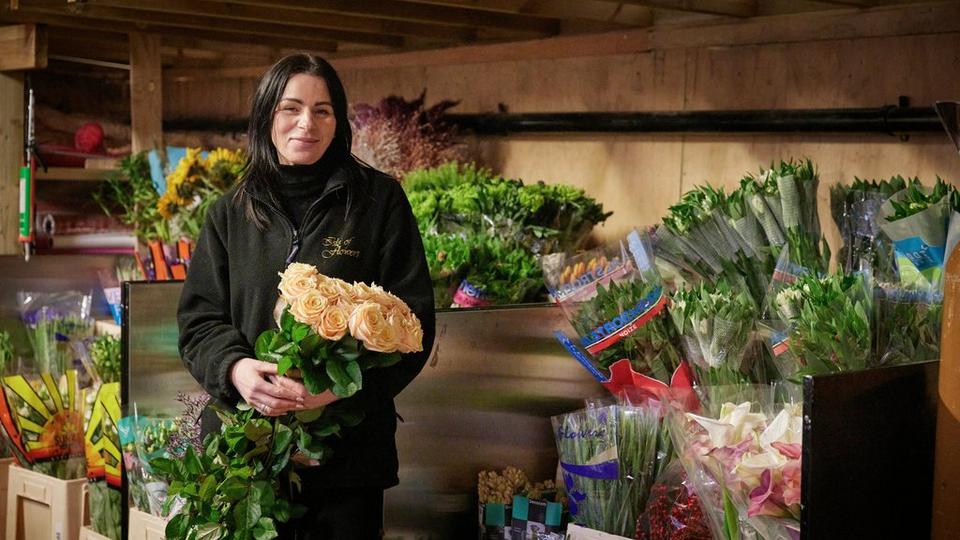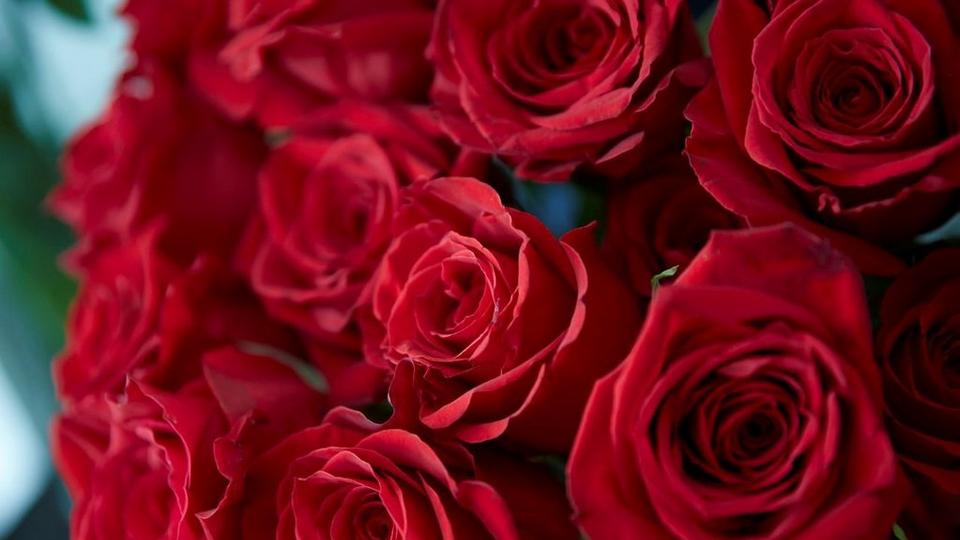The Ultimate Guide to Valentine’s Day Roses

When Monet said, “I must have flowers, always and always”, I’m convinced he meant peonies and honestly? Same. When I’m not lusting after their perfect petals or saving a bouquet from a too sunny windowsill, you’ll find me at home raising the next generation of flower lovers (think sticky hands and zero vase etiquette).
When Monet said, “I must have flowers, always and always”, I’m convinced he meant peonies and honestly? Same. When I’m not lusting after their perfect petals or saving a bouquet from a too sunny windowsill, you’ll find me at home raising the next generation of flower lovers (think sticky hands and zero vase etiquette).
Why do we send roses on Valentine’s Day? What do the different colours of rose signify? How many roses you send? We’re tackling all these questions and more, in this bumper guide to everything Valentine’s roses. Let’s put the petal to the metal and explore.
The history of Valentine’s roses
Like so many cultural traditions, exactly when and how sending roses on Valentine’s became the norm isn’t clear. We do know that Ancient Romans celebrated a festival on the 15th February, and that there were various Christian martyrs named St Valentine, each with their own mythic ties to romance. But there’s no smoking gun (or maybe we should say no shivering Cupid’s bow) for exactly when the flowers came into it. Some of the credit for the date and celebrations can perhaps go to writer Geoffrey Chaucer, whose poem ‘The Parliament of Fowls’, written in the 14th Century, suggested birds choosing their mates on February 14th. But that’s birds, not blooms!
Maybe we should look to the Victorians for the likeliest candidates for originating roses on Valentine’s. They were known for their love of sending messages using the symbolism of flowers (aka floriography) and they were known to send Valentine’s cards. Seeing as roses were already established symbols of love and passion maybe they joined the dots (the hearts?) and made the rose the iconic Valentine’s Day bloom. It’s one possible origin story – if you’ve got another, we’d love to hear it. Learning about flowers is one of our favourite things.
Rose meanings
The poem might go ‘roses are red’, but actually they’re also yellow, pink, orange, white, cream, lemon, fuchsia, mauve, burgundy…oh sorry we got distracted! What we were trying to say is that every colour of rose signifies something slightly different. Again, we likely have the Victorians to thank for that. Of course, there’s always the chance that these meanings will evolve again – if you revisit this blog post in 100 years (perhaps via a neurolink rather than a screen) perhaps red roses might symbolise brotherly love. But for now, here are the meanings that are generally accepted:
Choosing the right number of roses
Roses, in some ways, are like onions. Stay with us. What we mean is they have layers of meaning. One layer is the type, another the colour, and another the number of roses. Traditionally on Valentine’s Day people send a dozen – each one allegedly symbolising a month of the year, so representing a complete or whole love. But why be tied by tradition?
Top tip: send a custom number of roses to really make the bouquet personal
Did you know with Interflora you can choose exactly how many luxury, large-headed red roses to send? Six, 66, 31, 80 – you can pick exactly the right amount to celebrate your love. Here are a few ideas to get you started:
- Send the number of weeks, months or years you’ve been together
- Send the number of your first house you shared
- Send the number of months until a special event like a wedding
- Send the number that’s the date you met
Some also believe that certain numbers have their own special symbolism, for instance 108 red roses is said to indicate a proposal! But to be honest we still think sending a number personal to you is the most romantic gesture. Ready to send one? It’s right this way.
Seven Days (or More) of Freshness Guaranteed!
Our favourite depictions of roses
Roses are steeped in cultural history, inspiring artists, writers and songwriters through the years. And of course there are all sorts of rosy idioms too! Here are a few of our fave artistic and linguistic reflections of roses.
- “Rose tinted glasses” – an expression that means you’re looking at everything with a very (perhaps overly) optimistic perspective.
- “everything’s coming up roses” – this one means everything is working out nicely.
- “stop and smell the roses” – a reminder to enjoy life’s pleasures and not rush through.
What do they all have in common? Roses representing positivity, joy and optimism. Lovely.
- Let’s have a look at poems next, roses have got many a writer scribbling away.
- Nobody Knows This Little Rose by Emily Dickinson – a gem of a poem about the simple joy of a rose
- One Perfect Rose by Dororthy Parker – the queen of biting wit, Parker grows tired of rose gifts.
- Sea Rose by H.D. – a totally fresh take on roses, showing their resilience in the wild
And we couldn’t explore Valentine’s roses without thinking about the art they’ve inspired. We love Van Gogh’s Still Life – Pink Roses, it’s not his most famous painting of blooms but we love the great blousy pink blossoms. We’re also fans of Marie Antoinette with a Rose by Elisabeth Louise Vigée Le Brun. The pink cabbage rose was Antoinette’s signature flower and the detail it’s rendered in is remarkable. Our absolute favourite though is Carnation, Lily, Lily, Rose by John Singer Sergeant. A beautifully delicate painting it captures the subtle magic of growing roses
Valentine’s Day Roses: FAQs
Red roses have been the most iconic symbol of love for centuries, from ancient mythology to the romantic Victorian era. The rich crimson colour and sweet fragrance make them the ultimate way to say “I love you.” They’re classic for a reason.
Each rose tells a different story:
- Red: Romance and passion
- White: New beginnings and purity
- Pink: Admiration and appreciation
- Yellow: Joy and friendship
- Orange: Energy and desire
Pick the shade that says whatever your heart’s feeling this Valentine’s Day.
- 1 rose: Love at first sight
- 12 roses: “Be mine” (the classic Valentine’s bouquet)
- 24 roses: “I’m yours”
- 50 roses: Deep, unconditional love
So whether you’re going for a bold declaration or a gentle whisper of love, the number of blooms adds an extra layer of meaning.
Not everyone’s a red rose person, and that’s okay. Tulips, peonies, lisianthus or even sunflowers can make beautiful Valentine’s statements too. Choosing what feels right for your relationship is what matters most. Our talented local florists can create something truly personal.
A little TLC goes a long way when it comes to keeping roses at their best. Trim the stems at an angle, remove any leaves that’ll sit below the waterline, and pop them into fresh water with the flower food included. Change the water every couple of days and keep your bouquet away from direct heat and chilly draughts.
Red roses have symbolised love and passion for centuries, with roots in Greek and Roman mythology and the Victorian language of flowers. Their deep red colour, fragrance, and cultural significance make them the ultimate romantic gesture on Valentine’s Day.
The flowers will do most of the talking, but a few heartfelt words never hurt. Whether you go romantic (“Every day with you is my favourite”) or sweet and simple (“You’re my person”), a thoughtful message gives your bouquet even more meaning.
Need a bit more inspiration? We’ve got a whole bunch of Valentine’s Day quotes and messages to help you out over on our blog.

.jpg?$poi-square$&fmt=auto&qlt=default&fmt.jp2.qlt=60&bg=%23FF0050&w=960&aspect=16%3A9)
.jpg?$poi-square$&fmt=auto&qlt=default&fmt.jp2.qlt=60&bg=%23FFCBDB&w=960&aspect=16%3A9)


.jpg?$poi-square$&fmt=auto&qlt=default&fmt.jp2.qlt=60&bg=%23FFFFFF&w=960&aspect=16%3A9)

.jpg?$poi-square$&fmt=auto&qlt=default&fmt.jp2.qlt=60&bg=%23FFFFFF&w=960&aspect=16%3A9)